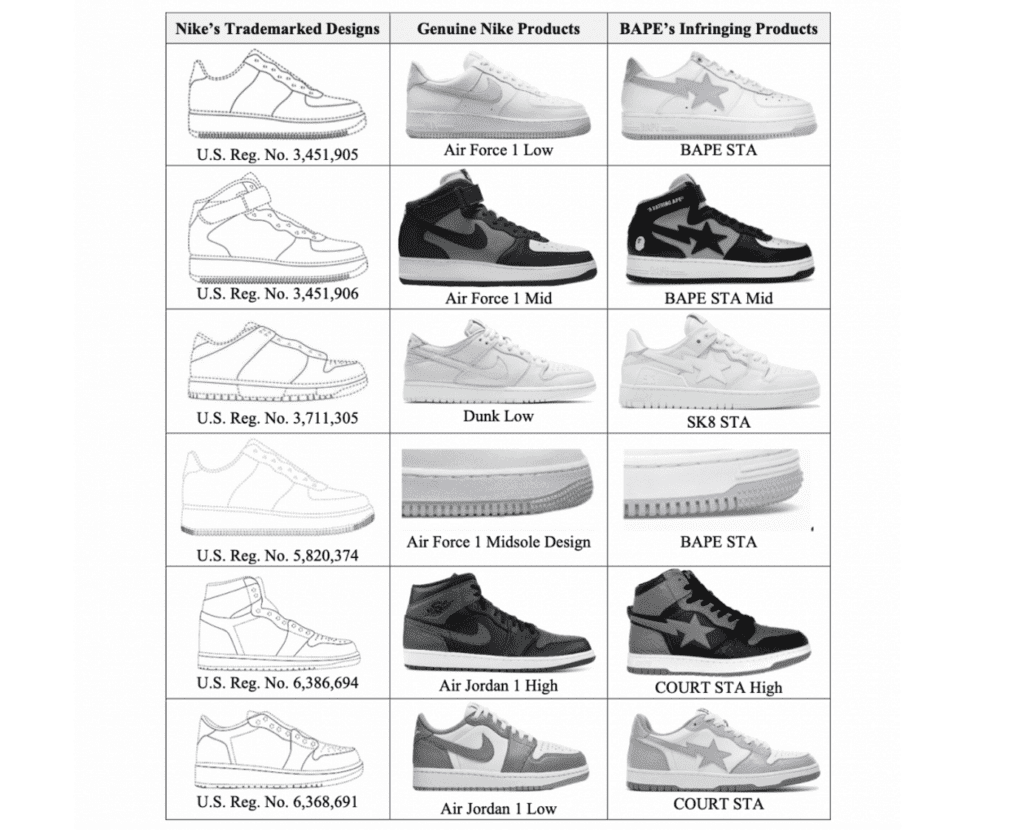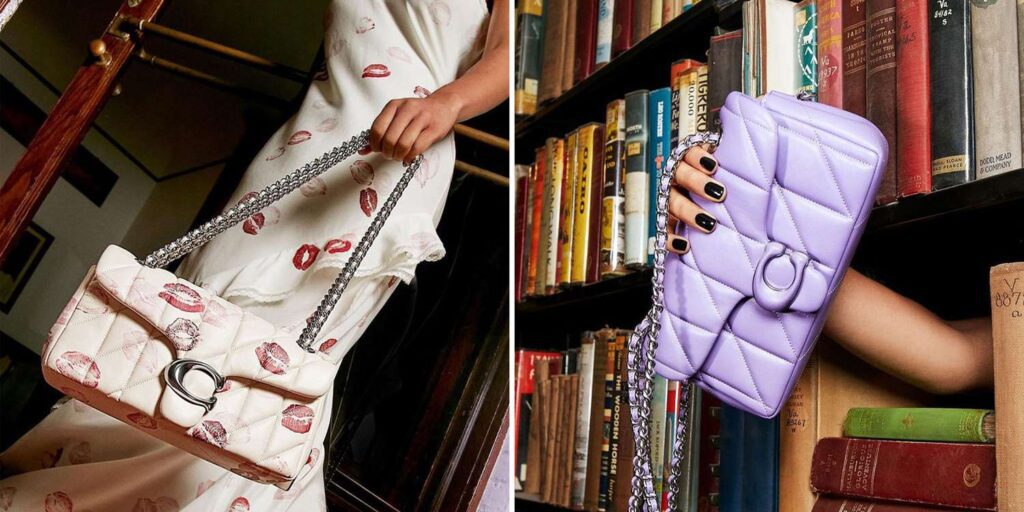USAPE LLC (“BAPE”) is looking to bolster its argument that Nike has fallen short in the trademark lawsuit that it waged against BAPE early last year. On the heels of pushing for the dismissal of Nike’s trademark infringement and dilution claims this spring (that motion has not yet been decided by the court), counsel for BAPE lodged a letter with the U.S. District Court for the Southern District of New York on Tuesday to alert the court to two decisions that became available in September 2023 (after its motion to dismiss was fully briefed), which it says serve as supplemental authority for its position that Nike “has failed to identify the elements of its purported [sneaker] trade dress” with the requisite specificity to pursue an infringement claim.
For some background: Nike filed suit against BAPE in January 2023, setting out claims of federal trademark infringement and false designation of origin/unfair competition, as well as trademark infringement and dilution under New York General Business Law. According to Nike, BAPE first introduced infringing footwear in the U.S. in 2005, but for the majority of that time, its infringement was “de minimis and inconsistent,” and thus, did not warrant litigation. It was not until 2021 that the company began to escalate its infringement scheme, prompting Nike to wage trademark claims on the basis that BAPE sneakers infringe its registered trade dress for (or the overall look of) the Air Force 1, Air Jordan 1, and Dunk sneaker designs.

BAPE filed a motion to dismiss on May, urging the court to dismiss Nike’s case on the basis that the Swoosh waited “nearly fifteen years [from when] it first contacted BAPE” over the footwear/streetwear company’s allegedly infringing footwear, and beyond that, “has not identified which attributes of its sneakers are distinctive enough to constitute source-indicative, protectable trade dress, making it impossible for BAPE or any other shoemaker to know what designs to avoid in order to steer clear of Nike’s alleged rights.”
Fast forward to January 16 and BAPE is backing up its arguments on the trade dress front by pointing to two decisions from judges in the Southern District of New York, namely …
> Wonderful Co. LLC v. Nut Cravings Inc., in which U.S. District Judge Mary Kay Vyskocil confirmed on September 26, 2023 that the “legal elements of a registered trade dress claim are the same as those of an unregistered trade dress claim,” save that “a plaintiff asserting a claim for registered trade dress infringement need not plead non-functionality.” In her decision, Judge Vyskocil found that the plaintiffs’ detailed trade dress description – which “specified marks, colors and fonts used on packaging – was sufficiently pled.
BAPE asserts that while Nike has argued that “it is not required to articulate its claimed trade dress with particularity because such trade dress is registered with the U.S. Patent & Trademark Office,” the Wonderful decision “demonstrates that Nike’s argument is legally inaccurate and further rebuts the Reloaded Opinion submitted by way of Nike’s Notice of Supplemental Authority.” (In December, Nike drew the court’s attention to the SDNY’s refusal to dismiss a separate infringement case that it waged over its Air Jordan 1 and Dunk trade dress given that its descriptions of the trade dress – which it presented by way of the descriptions included in its USPTO registrations – were sufficiently detailed.)
> Cardinal Motors, Inc. v. H&H Sports Prot. USA, Inc., in which U.S. District Judge Paul A. Crotty held in September that “a detailed expression of the trade dress is not necessarily a precise one … Likewise, there is no precise expression of the trade dress if it amounts to a claim over a general category of features.” The holding in Cardinal Motors “supports the conclusion that despite being lengthy, Nike’s descriptions are imprecise and broad enough to cover a general category of features,” per BAPE.
As such, BAPE is urging the court to dismiss all of Nike’s claims due to its “failure to identify the trade dress” at issue.
The Bigger Picture: The ongoing clash here brings to the forefront the critical issue faced by parties looking to amass trade dress rights and claim infringement, namely, how does a party define the combination of features that make up its trade dress with enough specificity to meet the pleading requirement (i.e., “an articulation of the specific elements which comprise its distinct dress”), while allowing enough room for the description to encompass infringing variations?
As Robins Kaplan’s Christopher Larus, William Manske, and Ellen Levish previously noted, disputes regarding the definition of the claimed trade dress “often take on an expected split: claimants (Nike in this case) “typically resist specificity” when it comes to trade dress descriptions, while defendants (BAPE, here) “demand it.” They state that both sides to a litigation can benefit from thinking about this issue more broadly, with an eye towards trial. Caution is merited on the plaintiff side when it comes to inconsistent and/or overly broad definitions of a trade dress.
At the same time, “similar caution is merited” for defendants, “which should resist the reflexive urge to push for an overly narrow definition of the claimed trade dress, as, among other things, “the broader the alleged trade dress, often the harder it is for a claimant to establish that the trade dress is source-identifying, and the defendant’s accused product or product packaging may be easier to distinguish.”
The case is Nike, Inc. v. USAPE LLC, 1:23-cv-00660 (SDNY).











